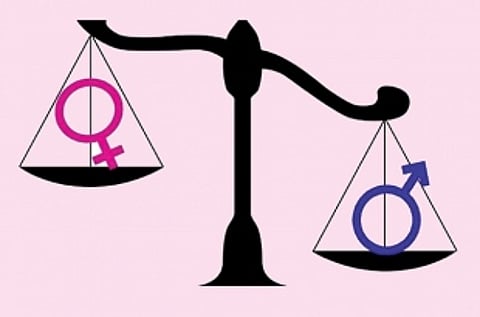

Goa’s overall sex ratio – women per thousand men – is healthy at 1,027 – much higher than the national average – but the overall birth record from 2015-2020 shows that the sex ratio has stood at 838 females born per 1,000 males, as per the National Family Health Survey (NFHS-5) for 2019-20, report. This is drastically down from the 966 girls per 1,000 boys born prior to the five years for the 2015-16 survey.
In the last five years, Goa’s total fertility rate (TFR) also witnessed a drop from 1.7 children per woman to 1.3 children, which is well below the replacement level of fertility of 2.1.
“In Goa, there is a strong preference for sons,” said the survey report.
NFHS-5 fieldwork for Goa was conducted from August 30, 2019 to November 26, 2019 by Nielsen India Pvt Ltd. Information was gathered from 1,856 households, 2,030 women, and 313 men.
As per the NFHS latest survey, for the overall population of Goa, the sex ratio is not only healthy at 1,027 females for every 1,000 males, but it is also better than the 1,018 recorded at the last family health survey in 2015-16.
“The improvement in total sex ratio is positive and a step in the right direction but still much needs to be done to improve it. We cannot say that there is decline in sex ratio but yes, in last five years, we have seen less number of girls being born. The one prime reason could be that couples today look for a smaller family of just one child ,” a senior official at the Health Department said, adding, “Goa is one amongst the few States that have always set an example by maintaining a high sex ratio.”
For the overall population, the sex ratio in rural areas stands at a fine 1,092 females per 1,000 males. But the figure for urban areas brings down the female sex ratio at 985 women per 1,000 males.
But in children born over the last five years, there have been 864 female births per 1,000 male births in rural areas. In urban areas of Goa, this figure stood at even less, just 822.
Also, the sex ratio of the population under 7 years of age is lower at 774 females per 1,000 males.
“Though we have 1027 females per 1000 males, the trend that only 838 girls were born to 1,000 boys in last five years is worrying. The difference might not look too big, but if no efforts are put in at this stage, the gap may continue to widen,” Dr Megha Shah, pediatrician said.
She asserted that a clearer picture would emerge after India completed its Covid-delayed census, originally due in 2021. The last census was conducted in 2011.
The Director of Women and Child Development, Deepali Naik, said that State’s sex ratio has shown an overall improvement by 15 per cent as per the latest survey conducted by the department. “As per our study, the sex ratio stands at 948 females per thousand males. In South Goa it is 964 females per thousand males while in North it is 948,” she said.
Naik said that the Beti Bachao Beti Padhao (BBBP) Scheme, launched in 2015, with the objective of bringing behavioural change in the society towards birth and rights of a girl child, has resulted in increased awareness and sensitisation of the masses regarding prevalence of gender bias and role of community in eradicating it.
As per NFHS survey, another area of concern for the state is its dropping fertility rate. Goa’s fertility rate dropped to 1.3 in 2019-20 from 1.7 during the last survey held in 2015-16. The government of India’s norm is that every family should have two children or that the ‘total fertility rate’ (TFR) should be 2.1. But the TFR for Goa is lower than this expected figure 1.7. The total fertility rate is the average number of children per woman in the eligible group.
Gynaecologist Dr Rita Monteiro said that a drop in fertility rate has been observed across all the developed or developing States as the couples are going for planned pregnancies. “Apart from opting for having one child, there are many young couples, who prefer to adopt child, rather than having their own,” she said.
The total fertility rate in urban areas is at 1.3 children per woman and in rural areas, at 1.4 children per woman – both much below the replacement level. “The trend shows that not just couples from urban areas, but even from the rural areas prefer to have only one child. The reason could be anything – low income, poor facilities, etc but this trend is growing,” a senior health official said.